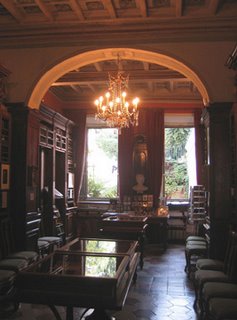In the English Ghetto: the Keats-Shelley Memorial House
 In the era of the Grand Tour, the neighborhood around the Spanish Steps was known as the English Ghetto. There, English-speaking travelers and expatriates made their homes. Among them was the poet John Keats, who came to Rome in late 1820 and died just a few months later in February of 1821.
In the era of the Grand Tour, the neighborhood around the Spanish Steps was known as the English Ghetto. There, English-speaking travelers and expatriates made their homes. Among them was the poet John Keats, who came to Rome in late 1820 and died just a few months later in February of 1821.The Roman pensione in which Keats spent the last three months of his life overlooks the Spanish Steps. Though this is now a rather tony address, Keats' accommodations were quite modest, for he was neither wealthy nor well-known at the time of his death. He occupied a few small rooms, including a bedroom that looked out at the Spanish Steps and a living room that faced Piazza di Spagna. As there were not kitchen facilities, meals were brought in by local restaurants.
Though Keats' possessions and furniture were burned after his death in 1821 (Roman law required this following death by a disease like tuberculosis), the building that housed Keats' rooms was purchased and restored in the early twentieth century. It now houses a museum and one of the finest libraries of Romantic literature in the world.
On view in the museum is an extensive collection of paintings, objects and manuscripts celebrating the lives of Keats, Shelley and Byron, as well as locks of Milton and Elizabeth Barrett's hair, a manuscript and poem by Oscar Wilde, and splendidly bound first editions and letters by Wordsworth, Robert Browning, Joseph Severn, Charles and Mary Cowden-Clarke.
You can learn more about the Keats-Shelley House by visiting their website, where you can take a virtual tour, or by planning a visit next time you're in Rome.
The Keats-Shelley Memorial House

<< Home